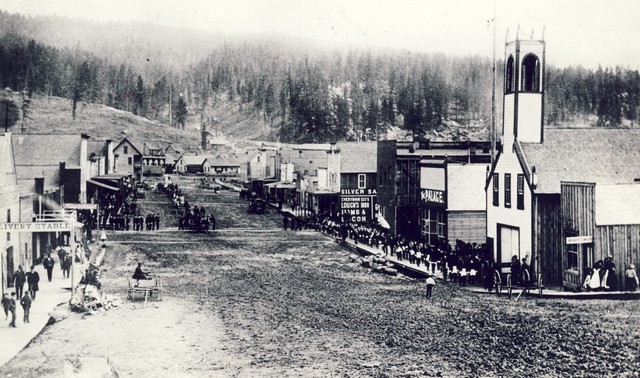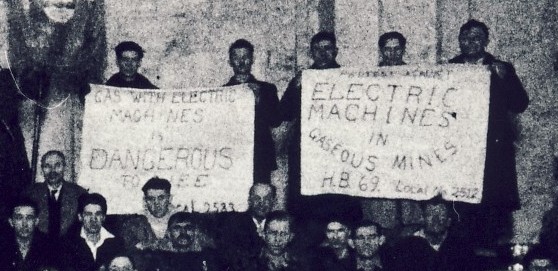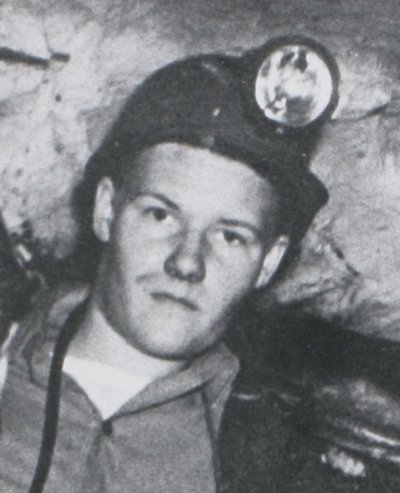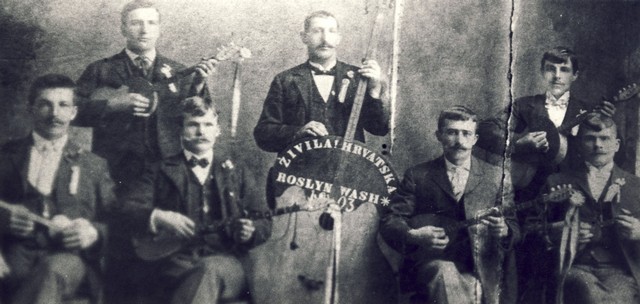
Sponsored Ads
|
» Home
» People » Croatians in America - photo collection by Vladimir Novak, part 2
» Home
» History » Croatians in America - photo collection by Vladimir Novak, part 2
» Home
» Croatian Life Stories » Croatians in America - photo collection by Vladimir Novak, part 2
| Croatians in America - photo collection by Vladimir Novak, part 2 |
| By Prof.Dr. Darko Zubrinic |
Published
03/20/2008
|
People , History , Croatian Life Stories
|
Unrated
|
|
|
|
Croatian Energy, page 6
Contents
ROSLYN, Washington

The main street in Roslyn, Washington, in 1892. At that time this was a strong mining area with mixed nationalities population of 1200, which grew to more than 4000 in 1920's. Around 1910 more than a half of the inhabitants were Croats, mostly miners. Today's population is nearly 800 residents with main industries tourism and recreation. The last of mines was closed in the 1960's.
| 
This photo from Roslyn museum "Echos of Our Past" shows a group of coalminers from this area. In the early days of 20th century a high percentage of the miners were Croatian emigrants.
| 
These coalminers on strike from Roslyn are sitting on the Capital steps in Olympia city. In 1932 they were protesting against the working conditions in the Roslyn mines as being unsafe. Union leadership was often in the hands of Croatians and meetings were conducted in their native language, in Croatian.
|  Gas with electric machines is dangerous to life. 
U rudarskom mjestu Roslyn (država Washington) oko 1910. godine su više od pola stanovnika bili Hrvati, ugavnom rudari i jasno, svi muškarci. Drugi s lijeva je "mladić Tony Bailey" , za koga se dvije godine poslije ustanovilo da je u stvari malda žena Glorija.
|
In the minig town Roslyn, Washington, around 1910 more than a half of the inhabitatnts were Croats, mostly miners, practically exclusively men. The second from the left is a young "boy Tony Bailey", who turned to be a young woman Gloria, as was discovered two years later. |  Gloria "Tony" Baily, a young girl - miner 
Life was harsh in the mining towns, but even though hazards exsisted and tragedies occured often, Croatians, like other people in the town, enjoyed their life. Pictured is the Roslyn tamburitza orchestra Živila Hrvatska (Hail Croatia) in 1903, composed of men who were themselves mainers. The photo was taken at the "Echos of Our Past" museum in Roslyn, Washington.
|  Živila Hrvatska Živila Hrvatska (Hail Croatia), tamburitza orchestra in Roslyn, Washington.  Živila Hrvatska Živila Hrvatska (Hail Croatia), tamburitza orchestra of Croatian miners in Roslyn, Washington.  Živila Hrvatska - Hail Croatia Živila Hrvatska - Hail Croatia, tamburitza orchestra of Croatian miners in Roslyn, Washington.  Photo by Vladimir Novak  Photo by Vladimir Novak
This is one of three large cemeteries for Croatian only in a little quaint mining town Roslyn, located about two hours drive east of Seattle in the State of Wasington. It is maybe the best example of the Croatian pioneer colony in the USA, and a bitter reminder of Croatian contribution to America. One woman married three times and three times lost her husbands to the miners. This cemetery in its silence throughout its eternity simbolizes the inevitable destiny of each individual emigrant.
Adam S. Eterovich: Croatian Cemeteries in Roslyn, Washington
|  Junque Palace; photo by Vladimir Novak
Once a grocery store on the second street in Roslyn, is now Junque Palace, a second-hand store specializing in old stoves, miner's hats, old typewriters, scythes, various tools and age-old necessities. The owners of the Junque Palace Mary and Joe Andlar collected 319 old miner's petroleum lamps ina 40-year period. Photo was taken in 1982.
| Please, go to the next page below. |
|
|
Comments
-
Comment #1
(Posted by george krovich)
my mother was born in pisorvina, married my on his trip to yugoslavia in 1930. he came here at age 16 and worked in the mines in pennyslvania for 47 years and died from blacl lung. i am the only one left from my family. i had a brother that died at 17 in 1951. i enjoyed looking at your pictures. i also saw my mothers home town since i never went to see her family. thank you george krovich
-
Comment #2
(Posted by shireen nalley)
if this is the nalley family please get in contact with me.575-218-2553
-
Comment #3
(Posted by lovinac)
Just a comment on Ek Spahich's commentary...The Croatian Islamic Centre in Toronto was built by Croatians of the Islamic faith and not by "Bosnians", hence the former name, Croatian Islamic Centre. This project was also realized thanks in large part to financial support from various Croatian catholic parishes throughout North America as well as their parishioners.
-
Comment #4
(Posted by Daniele)
i'm looking for Babare clan. i'm building the genealogist tree from my grandmother Luci, born in 1921 in Hvar and her family
-
Comment #5
(Posted by Dalmazio Babare)
My sisters name is Lucj or Lucja - my mother named the first daughter born after my fathers mother
Lucja Babare (she died Zadar)
-
Comment #6
(Posted by Allen Petrich)
I am a grandson of Martin (Marin) A. Petrich from Starigrad who came with his parents (Juraj/George Petrich & Catherine Budrovich of Hvar) to the US in 1887. I am working on a history of shipyards and boatbuilding on the West Coast of the US centered on the Northwest and the Dalmatian families of Babare (Hvar), Martinolich (Losinj), Skansich/Skansie (US spelling), Petrich (Starigrad), Martinac (Brac) and, in Los Angeles, Rados. The developed the purse seine fishing boat.
I would appreciate hearing from anyone who would lie contact.
Allen Petrich: allenpetrich@earthlink.net
-
Comment #7
(Posted by Brandie Lynn Bailey - Haining)
Toni Bailey was my grandmother
-
Comment #8
(Posted by Melissa Robles-Dyer)
I am the Granddaughter of Gloria (Tony) Bailey. We just found out this past Labor Day, that she is celebrated during Roslyn Coal Miner Days. We plan to be inattendance for the festivities in 2015.
-
Comment #9
(Posted by Mary Moon)
My grandfather was George M Karamatic. He played the e flat clarinet in the band.
Submit Comment
|
|